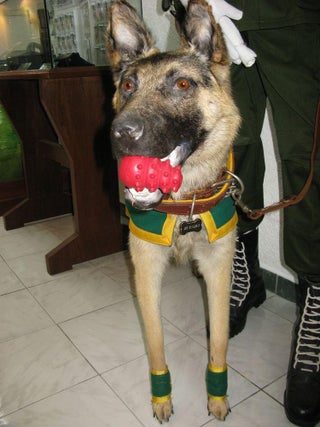
Did you know that there is an unofficial patron saint of drug traffickers?
His name is Jesús Malverde, and in Mexico, he’s sometimes known as the “narco-saint.” In the Mexican state of Sinaloa, he’s also a folklore hero, a sort of “Robin Hood” who was supposed to have stolen from the rich to give to the poor. His real story was a mixture of hardship, poverty and hunger, all of which may have lead to criminal behavior, but as with many legends, the truth is sometimes in the eye of the beholder. Though he died in 1909 at the age of 39, to this day he has faithful followers who praise him at Masses with prayers, protection charms and candles. There is even a reassembled shrine to the man at the Museo del Enervante, a museum holding some of the most obscure collections in Mexico City. The Catholic Church certainly doesn’t recognize Jesus Malverde as any sort of saint, but drug smugglers still supplicate his image with requests for protection, courage and prosperity.
They certainly needed all the help they could get while a dog named Zuyaqui was still alive.

Zuyaqui on display
Though Zuyaqui died in the early 2000s, the German Shepherd Dog’s fame lives on as the canine who found the most drugs in Mexican military and police history, and that is saying something. Just in one recent year, Mexican agents seized more than 42,645 pounds of cocaine, 5,222 pounds of heroin, 324,973 pounds of marijuana, 156,901 pounds of methamphetamine and 3,967 pounds of fentanyl. By any standard, that is a lot of drugs. Zuyaqui found nearly 8,000 pounds of marijuana, alone.
After Zuyaqui’s death, his body was said to have been dissected and is now preserved at the Museo del Enervante where it is positioned as if he was watching drug dealers. We’ve not been able to find Zuyaqui’s cause of death, or even when he died, but he is one of the more interesting parts of the museum managed by the Mexican government since 1985. The museum also contains bulletproof clothing, gold-plated guns, that shrine to Jesús Malverde – and other items that make up exhibits of things confiscated during Mexico’s long drug war. For that reason, the museum is popularly known as the Narco Museo. You can read more about its contents here, and you may have to since we’ve read that the venue is not open to the public, only to military and judicial personnel.
As for Zuyaqui, his famous exploits became known on international media, but in truth, between 2000 and 2010, the Mexican Federal Police trained 1,800 dogs to perform jobs similar to Zuyaqui’s.
Image of Zuyaqui’s taxidermic body shared from the museum’s website under an expired copyright date and fair use
